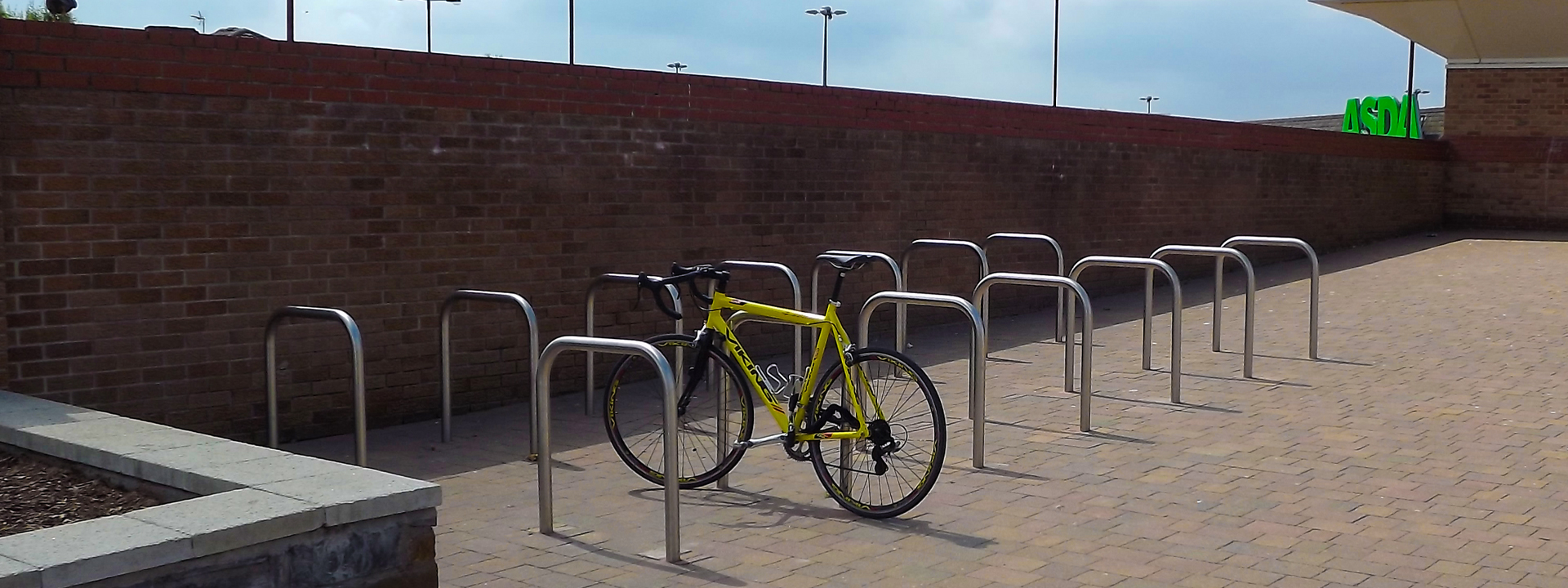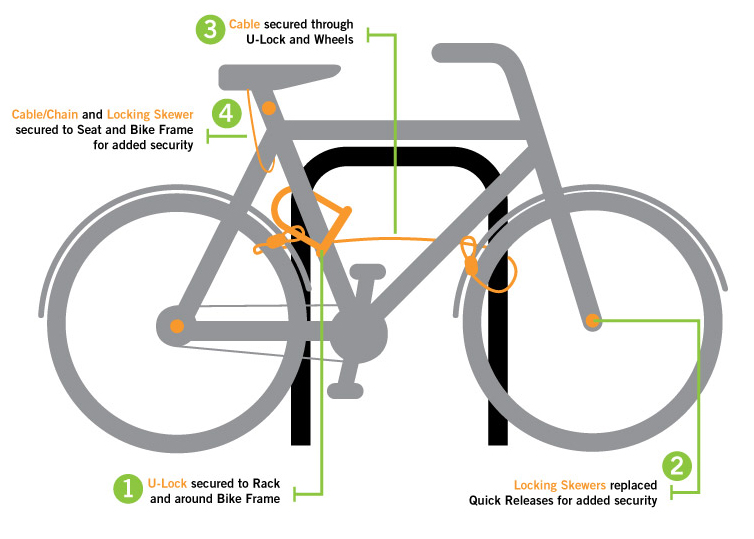Good practice for cycle parking

There's hardly a destination where cycle parking isn't necessary - schools, businesses, stations, surgeries, shopping centres, to name but a few. This guide explains the best way of providing it.
The importance of well designed, high quality and convenient cycle parking wherever it's needed (or potentially needed) must never be underestimated. It affects the chances of a bike being stolen or damaged; and it can even influence someone’s decision to cycle in the first place. Lampposts, railings or gutter pipes just aren't good enough.
'Sheffield' stands are the most common and simplest form of cycle stand: effectively an inverted 'U' shape, which supports the whole bike. They are popular because the stand keeps a cycle steady while it’s being locked, or luggage is being removed from it. Both the frame and wheels can be usually be locked to a Sheffield stand, making theft more problematic.

While Sheffield stands are widespread, there are other designs available (e.g. ‘heritage’ racks for historic city centres). These may be fine, but only if they are as useable as they are nice to look at.
Slotted concrete slabs, or ‘butterfly’ wall racks are unpopular with cyclists because they have a tendency to bend wheels and don't support the whole cycle.
Location
There is no point in installing cycle parking in obscure, remote locations – if it is, it’s more than likely that it won’t be used much or at all. It has to be near, ideally within a short walk of the most likely destinations and, for better security, in public view and lit at night.
Quantity
Cycle parking should cater for both existing and potential demand. It is surprising how quickly new stands fill up.
Workplaces
Employers tend to opt for 'Sheffield' stands (see above) because they are cheap, durable and easy to produce and maintain. They can also be improved by installing a Perspex or metal covering, to keep the bikes and cyclists dry when it rains.
Just as with car parking, cycle parking should be visible to staff, security guards or CCTV systems to minimise theft. It's even better if it's difficult to approach by van - thus preventing bulk theft.
However well a cycle is locked, vital parts can still go missing. You can't cycle home if someone has stolen your saddle or handlebars! Where regular users leave bikes for the whole day, a locked room within the building or an outdoor compound can be the ideal solution. If outside space is limited, wall-mounted racks are worth considering; hanging hooks can be fitted inside too and can make good use of not much room.
Original article from We Are Cycling UK
To view our cycle parking range click here or get in touch with our team on 01625 879442 or email enquiries@streetfurnituredirect.co.uk
Street Furniture Direct is part of the Bailey Street Furniture Group a privately owned collection of individual companies serving the construction sector, providing a wide range of street furniture, playground elements and associated services to the public realm, commercial and educational schemes throughout the UK.
Find out more here www.bsfg.co.uk